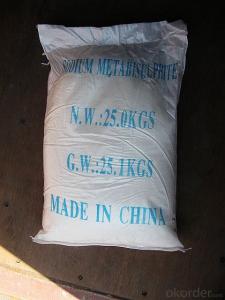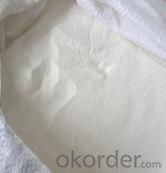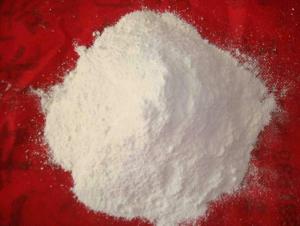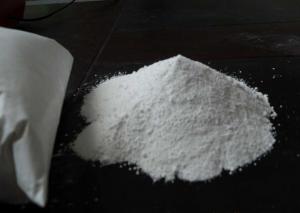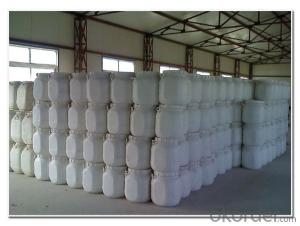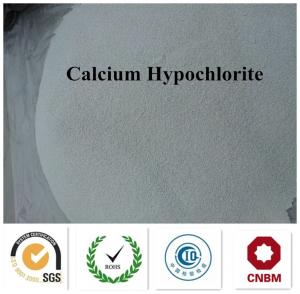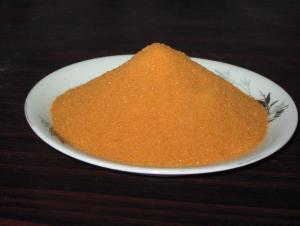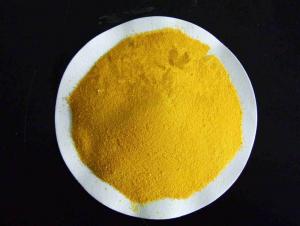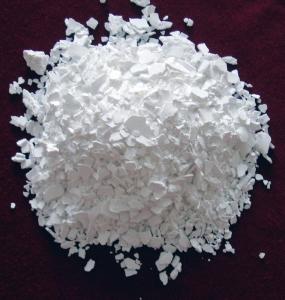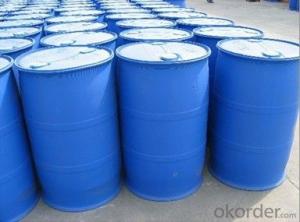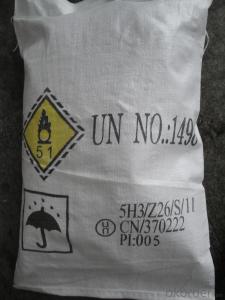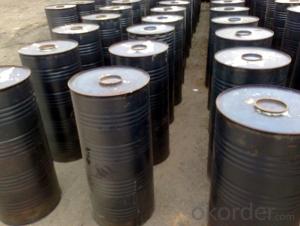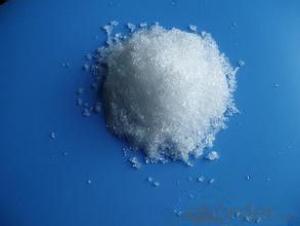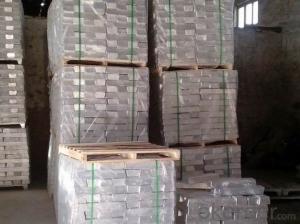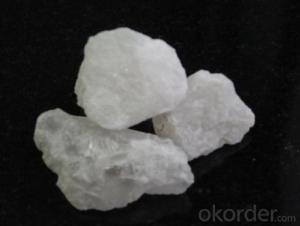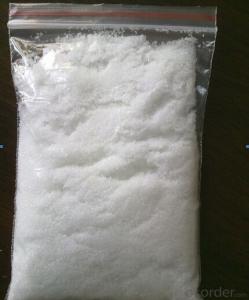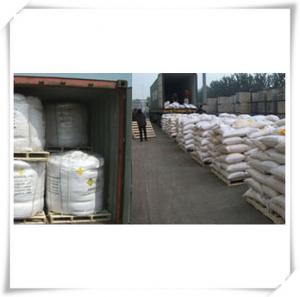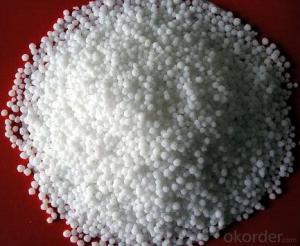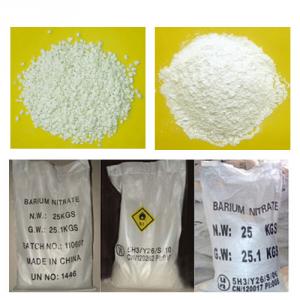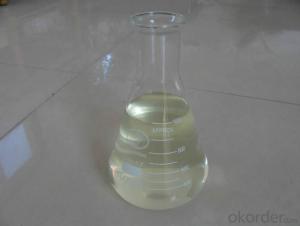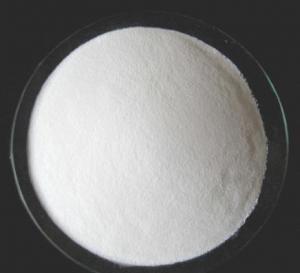INDUSTRY GRADE SODIUM METABISULFITE 97.2%
- Loading Port:
- Qingdao
- Payment Terms:
- TT OR LC
- Min Order Qty:
- 20 m.t.
- Supply Capability:
- 3000 m.t./month
OKorder Service Pledge
OKorder Financial Service
You Might Also Like
pecification For Food Grade and Industry Grade :
Item | Quality Index | |
Food Grade | Industry Grade | |
Purity ( As Na2S2O5) | 98.0% min | 96.0% min |
Sulfur Dioxide( SO2) | 65.0% min | 65.0% min |
Arsenic ( As ) | 0.0002% max | - |
Heavy metals ( As Pb ) | 0.0005% max | - |
Selenium (Se ) | 0.0005% max | - |
Iron (Fe) | 0.001% max | 0.002% max |
Water insoluble | 0.02% max | 0.05% max |
PH value : | 4.0-4.8 | 4.0-4.8 |
Remark : | Conformed with FCC V and E 223 Standard | |
Specification for Pharmaceutical Grade and Photo Grade
Item | Quality Index | |
Pharmaceutical Grade | Photo Grade | |
Purity ( As Na2S2O5) | 98.0% min | 98.0% min |
Sulfur Dioxide( SO2) | 65.0% min | 65.0% min |
Thiosulphate ( As S2O3) : | 0.05 % max | 0.05% max |
Chloride ( As CL-) : | 30 ppm max | 50ppm max |
Arsenic ( As ) : | 1ppm max | 1ppm max |
Lead ( Pb ) : | 1 ppm max | 2ppm max |
Copper (Cu) : | 1 ppm max | 1ppm max |
Iron (Fe ) : | 5 ppm max | 5ppm max |
Mercury (Hg) : | 0.1ppm max | 1ppm max |
Chromium (Cr) : | 1 ppm max | - |
Selenium (Se ) : | 1 ppm max | 5ppm max |
Zinc (Zn) | 1 ppm max | 1ppm max |
Cadmium (Cd ) | 1ppm max | - |
Nickel (Ni) | 1ppm max | - |
Na2SO3 + Na2SO4 | 1.5% max | - |
PH value : | 4.0-4.8 | 4.0-4.8 |
Remark : | Conformed with USP standard | |
Application:
(1) Food Grade: Bleach agent (e.g. candies, cake, bamboo shoots, etc); Loose agent (e.g. bread, cracker etc); Antiseptic and germicide (e.g. fruit juice, tinned food, brews, the cereals food is defended storage etc); Inhibitor and freshen agent (e.g. day lily, seafood, fruit and vegetable etc).
(2) Industry Grade: Mordant of printing and dyeing; Dechlorinate of textile after bleaching; Sulphonated agent and reducer of chemical industry and pharmacy; Bleach of paper pulp, bamboo and timber bleach of Stap; Treatment agent of waste water; Rubber solidifying agent Perfume industry is served as hydro carbon perfume aldehyde
The hide profession employ to do to molt dose and pliable dose and wearproof dose; sewage treatment, and so on .
(3) Pharmaceutical Grade: In chemical synthesis in the production of acrylic fibre, vitamin K, vitamin A, pharmaceutical intermediates, etc.
(4) Photo Grade: The sensitize industry is served as the developing agent reductant and the protection of fixing bath dose.
Storage: Store the product in a dry and cool place.
- Q: Like the role of B, Fe, Mg, Ca, Mn, Cu, Cl, P, S, N ...., the more specific the better (college entrance examination range)
- Ca2 + is the animal bone and teeth (containing CaCO3) composition, and blood coagulation and muscle contraction has a regulatory role, if the content is too low, the animal will appear muscle twitch. K + is a variety of enzyme activator, for the plant starch and protein synthesis and animal nerve impulse conduction and muscle contraction also plays an important role. Fe is a component of hemoglobin and cytochrome, and iron-containing enzymes are indispensable when chlorophyll is formed in plants. Another example is Na + for animal heart beat, nerve excitement is indispensable.
- Q: Do inorganic mercury salts bioaccumulate?
- Yes they do bioaccumulate. Mercury builds up for years and years, and eventually sits in a residue of pure mercury. - JJ
- Q: Is it possible to adjust the internal temperature of the carbohydrate in the vacuole
- multi-cell plant cells are living in the individual within the water environment, but this environment with the human body's internal environment can only be similar is not the same, and plant cells and no extracellular liquid this argument.
- Q: What are the important physiological functions of inorganic salts in cells
- Inorganic salts are important for the structure of tissues and cells. Hard tissues such as bones and teeth are mostly composed of calcium, phosphorus and magnesium, and soft tissue contains more potassium. The inorganic salts in the body fluids regulate the permeability of the cell membrane, control the moisture, maintain normal osmotic pressure and acid-base balance, and help transport the common elements to the whole body, participate in nerve activity and muscle contraction. Some are inorganic or organic compounds that are involved in many important physiological functions of constituents, hormones, vitamins, proteins and nucleic acids that make up enzymes, or as activators of various enzyme systems. For example: to maintain the heart and brain activity, to help the formation of antibodies, play a useful role in the human body.
- Q: What is the use of inorganic salts and organic salts?
- The organics are compounds containing carbon, and the inorganic salts are salts containing no carbon. For example, we usually eat sugar is organic matter, salt is inorganic salt.
- Q: What are organic and inorganic salts?
- Salt is a mineral from the Earth. Salts similar to iodized are extra munufactured and aren't fully typical. However salts like sea salt have the leat amount of processing. Some say that sea salt is healthier since it's he most traditional state of salt that you could get in mass production. I wolud must agree with them.
- Q: Calcium is not an inorganic salt
- Calcium salt is determined whether it is inorganic salt depends on its acid, if it is organic acid synthesis of calcium salt is organic salt, if it is inorganic acid synthesis of calcium salt is inorganic salt. The main basis for determining the inorganic salts is whether or not organic reactants are involved in the formation process.
- Q: Why vegetables and fruits contain rich inorganic salts
- Because they are plants! From the biological point of view, they are the nature of the organic matter into inorganic salt carrier
- Q: I need help with this
- anything which contain carbon is organic. so enzyme is the odd one out.
- Q: The difference between the ignition of inorganic salts and organic matter
- Will the ignition of inorganic matter and the ignition of organic matter, thank you
Send your message to us
INDUSTRY GRADE SODIUM METABISULFITE 97.2%
- Loading Port:
- Qingdao
- Payment Terms:
- TT OR LC
- Min Order Qty:
- 20 m.t.
- Supply Capability:
- 3000 m.t./month
OKorder Service Pledge
OKorder Financial Service
Similar products
Hot products
Hot Searches
